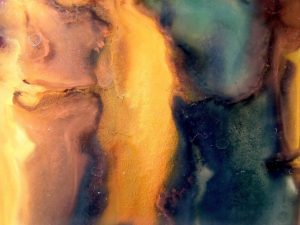From Rachel Armstrong, Professor of Experimental Architecture.
From the end of April to May this year, I am participating in the Rising Waters Confab II Fellowship Residency with the Robert Rauschenberg Foundation (RRF). This is the second year it has convened on site at Robert Rauschenberg’s studio and home on Captiva Island, Florida, USA, where he lived and worked for 40 years on 20 acres between the Gulf of Mexico and Pine Island Sound. The site is infused with an exceptional history, beauty and serenity and was converted into a multidisciplinary artists’ community in 2012. Today it has become a “ground zero” threshold for discussions that address one of the most crucial issues of our time and hosts over 70 artists and creative thinkers annually.
The emphasis of Rising Waters II is in keeping with RRF’s focus on environmental conservation and stewardship, which stems from Robert Rauschenberg’s longstanding concern for the safekeeping of the environment and the notion of individual responsibility. The residency embodies Rauschenberg’s innovative edge and cross-disciplinary approach to artistic expression and his fundamental belief that art can change the world.
Of course, low-lying landmasses, such as Captiva Island, will eventually become paradises that are lost to us through sea-level rises. Yet, in the meantime, such locations may also become laboratories for creative planning, and deployed as experimental platforms to address the first wave of rising waters worldwide. Curated by artist Buster Simpson, the residency aims to spark new thinking and influence civic action toward finding and spreading solutions to the rising waters of climate change.

Artificial soil produced by activated gel and soluble salts moving through the matrix to produce a self-organizing system of mineral deposition. Photograph taken at the Chemistry Outreach Laboratory, Newcastle University, 2015.
During the residency I will be working with a diverse array of artists and writers in a spirit of collaboration with artists, architects, landscape architects, marine biologists, environmentalists, authors, theologians, scientists, activists, advocates, philanthropists and island dwellers from the USA, UK and Trinidad. Together we will explore how we may work towards a phased adaptation response to climate change that is proportionate to humanity’s ability to reduce its consumption of natural resources and environmentally polluting practices.
Rising Waters II takes an open-ended approach to climate change, with collective discussions and collaborative projects. Visitors including engineers, activists and scientists are also hosted throughout the month to help inform the collaborative work. Personal research and investigations into the challenges are also encouraged and may take many forms such as agit props, performances, installations, the production of artifacts, or social investigations. My own work will draw from my research on living materials and experimental architecture that takes a visionary perspective of global challenges and explores new approaches through the iterative production of prototypes. For example, I will examine how artificial soils may reveal the self-organizing capabilities of organic matrixes through pattern making processes. I will also draw on field studies that I have conducted in the city of Venice, which has weathered sea level change over the last millennium, to examine how substances may be choreographed to produce new material spaces like reefs and islands.
As in the first Rising Waters Residency that was held in the spring of 2015, it is likely that the public outreach effort of this residency will continue long after the event has ended and that some of the concepts that arise from this study period will become catalysts for new projects and inform ongoing environmental actions elsewhere.
Rachel Armstrong is Professor of Experimental Architecture in the School and PI of the Horizon 2020 Living Architecture project.
She teaches onto the MSc in Experimental Architecture and Architecture Degrees in the School.
